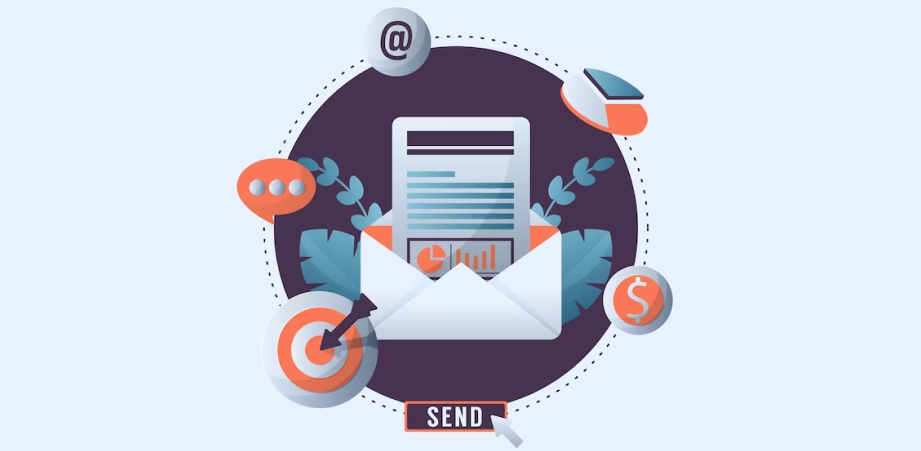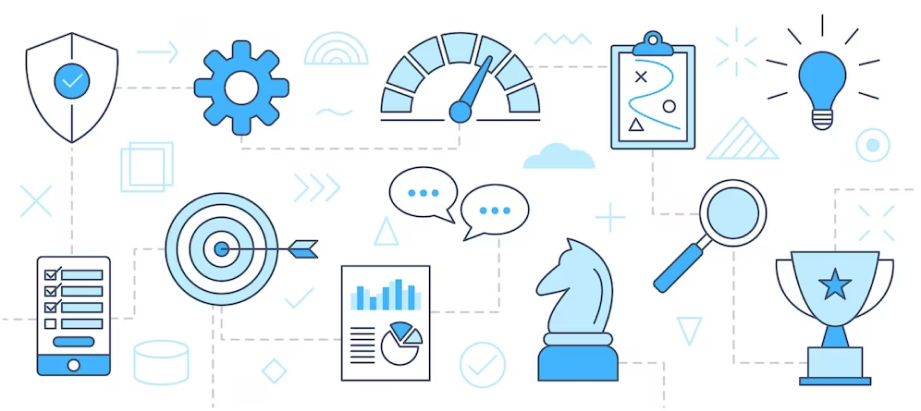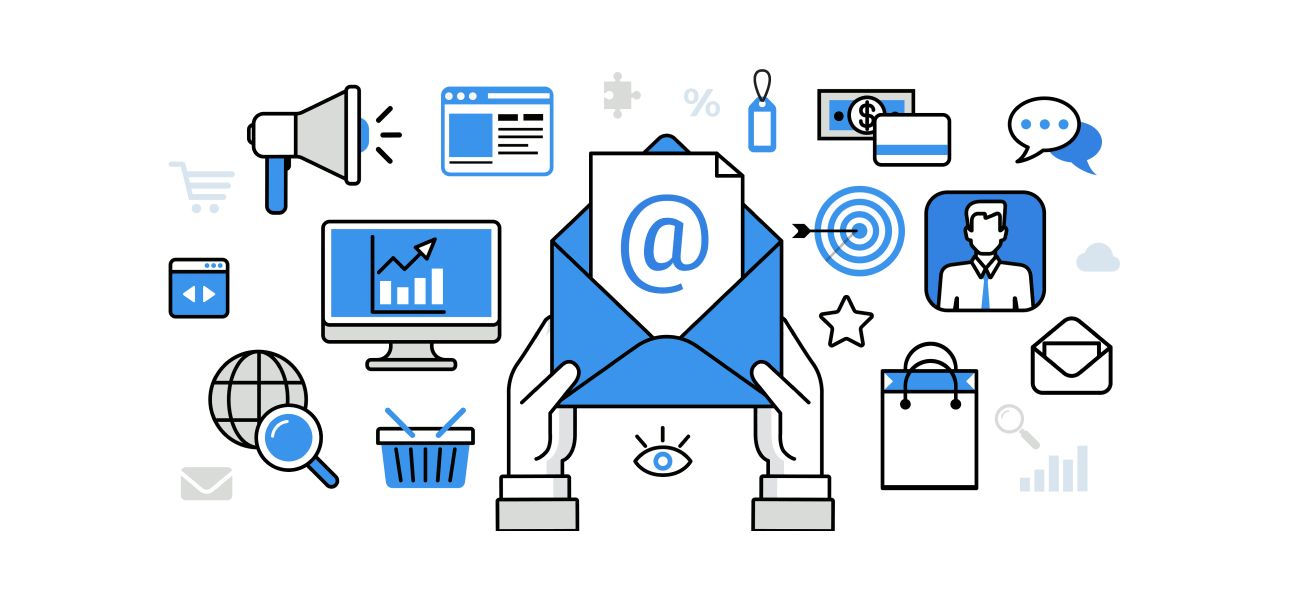Introduction to Email Marketing
Email marketing is a form of digital marketing that involves sending targeted commercial messages or newsletters to a group of people via email. It is a cost-effective way for businesses to promote their products or services, build brand awareness, and maintain customer relationships. Email marketing campaigns can be personalized, automated, and analyzed for their effectiveness. Successful email marketing requires a well-crafted message that resonates with the target audience and a reliable email list that complies with spam laws and best practices.
Creating an Effective Email Marketing Strategy
1 - Define goals and target audience
2 - Build an engaged email list
3 - Segment your email list
4 - Create attention-grabbing subject lines and pre-header text
5 - Design visually appealing and mobile-responsive emails
6 - Use persuasive copy and clear CTAs
7 - Test and optimize your email campaigns
8 - Monitor key metrics
9 - Follow best practices for email marketing
Building an Email List: Best Practices and Tips
1 - Use a lead magnet to encourage sign-ups
2 - Make your sign-up form visible and easy to use
3 - Offer customization options for subscribers
4 - To promote your email list, use social-media.
5 - Use pop-ups and exit-intent forms
6 - Use gated content to capture email addresses
7 - Offer exclusive content or deals to email subscribers
8 - Regularly clean and maintain your email list
9 - Follow anti-spam laws and guidelines.
Crafting Effective Email Campaigns: Dos and Don'ts
Dos:
1 - Use personalization
2 - Use compelling subject lines
3 - Use clear CTAs
4 - Use mobile-responsive design
5 - Keep email copy concise, informative, and engaging
6 - Use A/B testing
7 - Include social sharing buttons
8 - Monitor and analyze key metrics
9 - Follow best practices for email marketing
Dont's
1 - Don't use generic or spammy subject lines
2 - Don't use too many images or graphics
3 - Don't use a confusing or cluttered design
4 - Don't use misleading or exaggerated claims
5 - Do not buy the email lists or send any unsolicited emails
6 - Don't send too many emails
7 - Don't neglect to test and optimize
8 - Don't ignore subscriber feedback or complaints
9 - Don't forget to follow anti-spam laws and guidelines.
A/B Testing for Email Campaigns: Tips and Strategies
A/B testing is a valuable technique in email marketing that can help marketers continuously improve the effectiveness of their email campaigns. it can also be applied in chatbots and online forms. The process involves creating two different versions of an email campaign with one variable changed between them. The variations are then randomly sent to different segments of the email list, and the results are analyzed to determine which version performed better. However, to conduct effective A/B testing, marketers need to follow certain tips and strategies
The first step is to define the objective of the email campaign, which will help determine what variable(s) to test. Marketers then need to identify the variables to be tested, such as subject lines, call-to-action buttons, images, and email copy. Additionally, marketers must decide on the size of their test group to ensure statistically significant results. After creating the variations, the email list is split randomly, and the versions are sent to different segments. Once the campaign has been sent, results are analyzed, and marketers can draw conclusions about which version performed better. The insights gained from A/B testing can then be used to improve the email campaign, and the testing process can be repeated to continually optimize the campaign's effectiveness.
Additional tips:

- Keep your test groups separate.
- Test one element at a time.
- Test on a regular basis.
- Be patient.
Personalization in the Email Marketing: How to Do It Right
Personalization is a crucial aspect of email marketing as it helps to create a more engaging and personalized experience for the recipient. Here are some tips to help you. collect data using online forms about your subscribers
- Segmenting your email list and personalizing emails for each segment
- Using dynamic content and triggered emails
- Personalizing subject lines and the email body
- Testing and optimizing your personalized emails
- Respecting your subscribers' privacy and obtaining their consent
Email Design Best Practices and Tips

Here are the best practices and tips for designing effective emails:
Creating effective emails that engage and convert requires careful consideration of design and content. To create an email that is visually appealing and easy to read, it is best to use a clean and simple layout with white space, limit the number of images and graphics, and make sure it is optimized for mobile screens. It is also important to have a clear and concise subject line that grabs attention and is relevant to the content of the email. Personalization is also key to increase engagement, including addressing the recipient by name and using personalized content.
A clear call to action should be included in the email with clear and prominent buttons or links that encourage the recipient to take action. Alt tags should be used for images to ensure accessibility to visually impaired recipients and improve email deliverability. Before sending out the email campaign, it is important to test it across different email clients and devices to ensure that it looks and functions as intended. Finally, it is essential to comply with laws and regulations such as GDPR and CAN-SPAM to avoid legal issues and maintain a good reputation.
Email Deliverability: Best Practices to Avoid the Spam Folder
Email deliverability is crucial to the success of an email marketing campaign. Here are some best practices to help avoid the spam folder and increase the chances of your emails reaching your subscribers' inboxes:
- Use a reputable email service provider (ESP).
- Obtain permission to send emails.
- Use a clear and recognizable sender name.
- Write compelling subject lines.
- Segment your email list.
- Avoid spam trigger words.
- Keep your email content relevant and valuable.
- Include a clear and visible unsubscribe link.
By following these best practices, you can help ensure your emails are delivered to your subscribers' inboxes and avoid the spam folder.
Measuring the Success of Your Email Campaigns: Metrics to Track
Measuring the success of your email campaigns is crucial to understand how your audience is engaging with your content and to improve your future campaigns. Here are some metrics to track:
1 - Rate: The percentage of subscribers who opened your email.
2 - Click-Through Rate (CTR): The percentage of subscribers who clicked on a link in your email.
3 - Conversion Rate: The percentage of subscribers who took the desired action, such as making a purchase or filling out custom form.
4 - Bounce Rate: The percentage of emails that could not be delivered to the recipient's inbox.
5 - Unsubscribe Rate: The percentage of subscribers who chose to unsubscribe from your emails.
6 - Revenue: The amount of revenue generated from your email campaign.
7 - Forward/Share Rate: The percentage of subscribers who forwarded or shared your email with others.
8 - List Growth Rate:The rate at which your email list is growing.
By tracking these metrics, you can gain insights into your audience's behavior and preferences, optimize your campaigns for better results, and improve your overall email marketing strategy.
Tips for Continuous Improvement of Your Email Marketing Strategy.

To continuously improve your email marketing strategy, consider these tips:
- Regularly test and optimize your email content, subject lines, and calls-to-action.
- Segment your email list and personalize your emails based on recipient behavior and interests.
- Monitor your email metrics and adjust your strategy accordingly.
- Stay up-to-date with email marketing best practices and industry trends.
- Experiment with different types of emails, such as newsletters, promotional emails, and transactional emails.
- Use automation and triggered emails to deliver timely and relevant messages to your subscribers.
- Maintain a clean email list by regularly removing inactive or invalid subscribers.
- Ensure your emails are mobile-responsive and visually appealing.
By implementing these tips, you can continuously improve your email marketing strategy and achieve better results over time.





